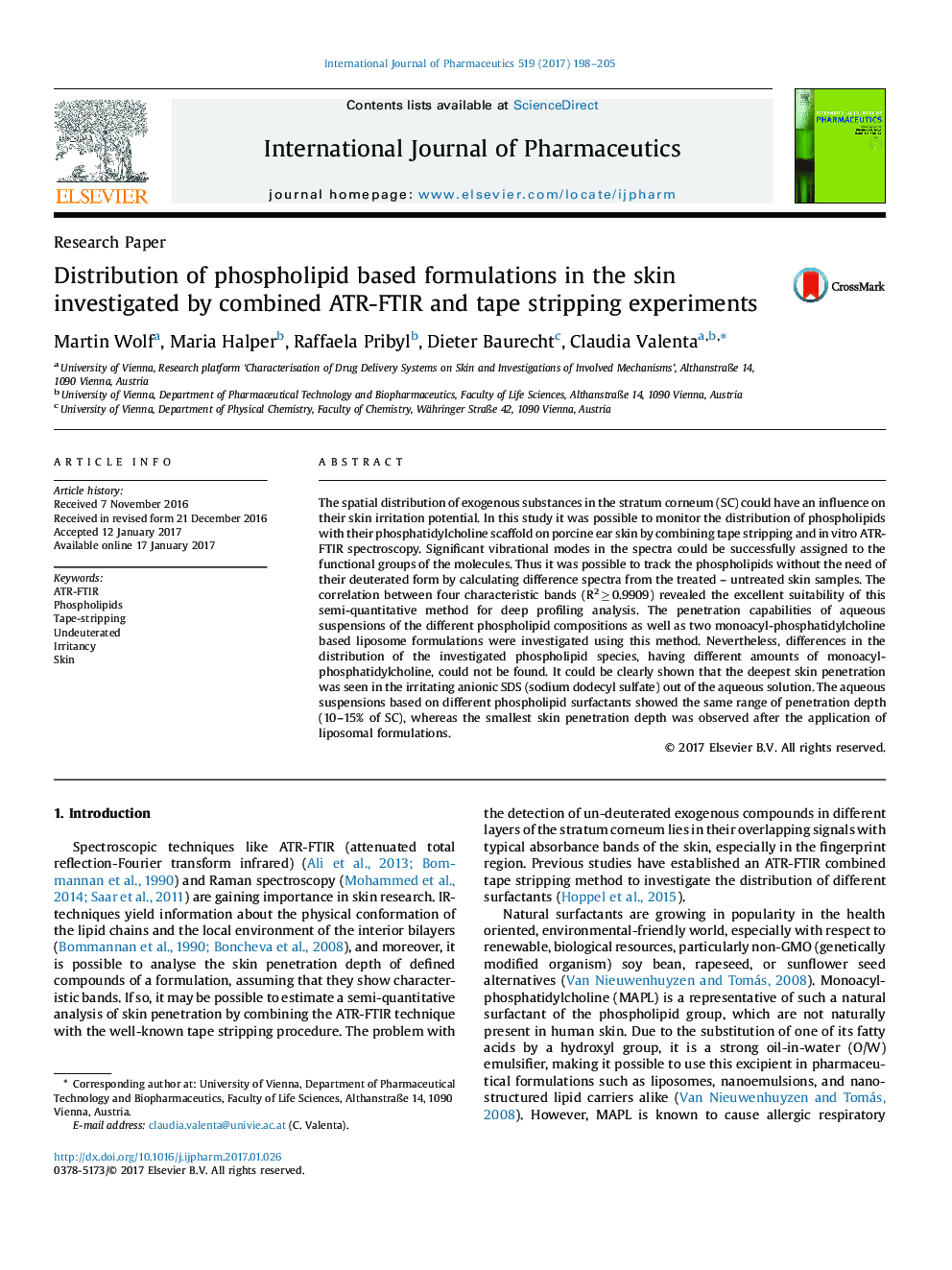| Article ID | Journal | Published Year | Pages | File Type |
|---|---|---|---|---|
| 5550684 | International Journal of Pharmaceutics | 2017 | 8 Pages |
The spatial distribution of exogenous substances in the stratum corneum (SC) could have an influence on their skin irritation potential. In this study it was possible to monitor the distribution of phospholipids with their phosphatidylcholine scaffold on porcine ear skin by combining tape stripping and in vitro ATR-FTIR spectroscopy. Significant vibrational modes in the spectra could be successfully assigned to the functional groups of the molecules. Thus it was possible to track the phospholipids without the need of their deuterated form by calculating difference spectra from the treated - untreated skin samples. The correlation between four characteristic bands (R2 â¥Â 0.9909) revealed the excellent suitability of this semi-quantitative method for deep profiling analysis. The penetration capabilities of aqueous suspensions of the different phospholipid compositions as well as two monoacyl-phosphatidylcholine based liposome formulations were investigated using this method. Nevertheless, differences in the distribution of the investigated phospholipid species, having different amounts of monoacyl-phosphatidylcholine, could not be found. It could be clearly shown that the deepest skin penetration was seen in the irritating anionic SDS (sodium dodecyl sulfate) out of the aqueous solution. The aqueous suspensions based on different phospholipid surfactants showed the same range of penetration depth (10-15% of SC), whereas the smallest skin penetration depth was observed after the application of liposomal formulations.
Graphical abstractDownload high-res image (127KB)Download full-size image
